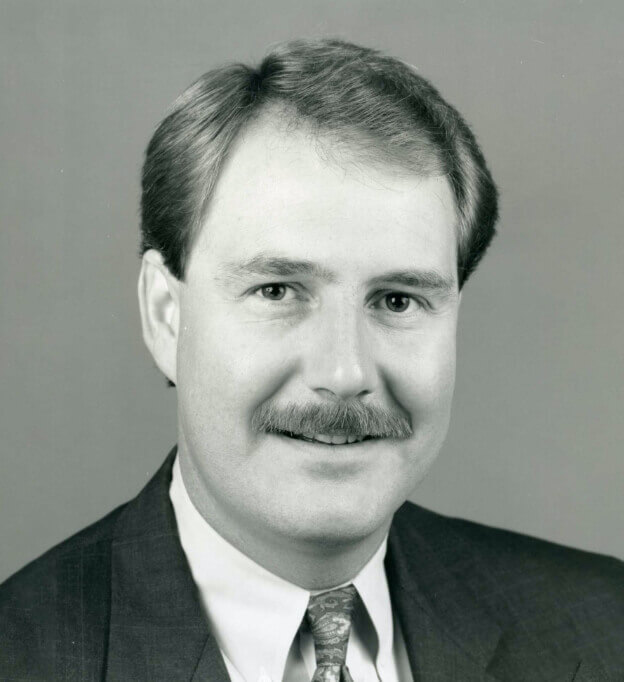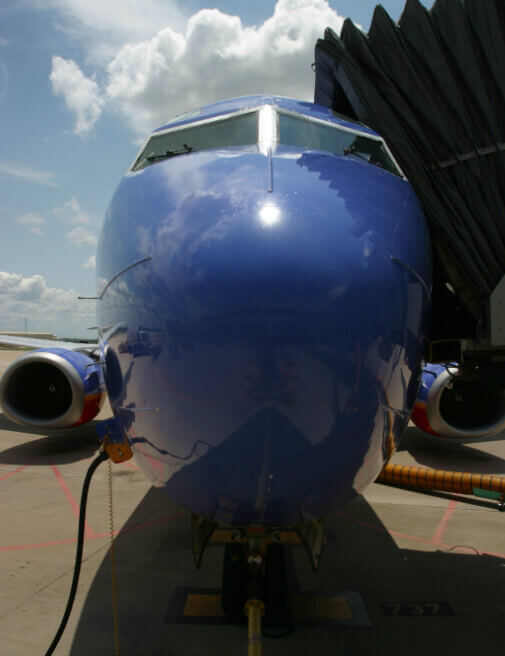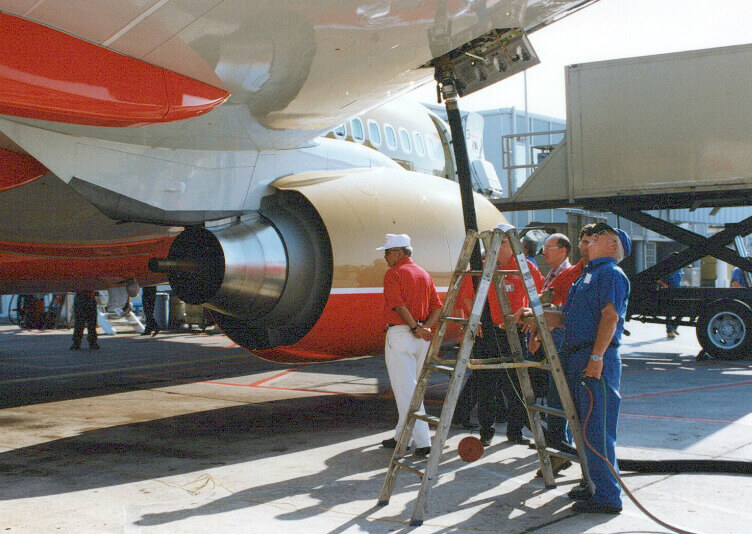
Gary Kelly in the 1990s
The Southwest Jet Fuel Hedge Strategy
In 1994, Southwest Airlines was growing rapidly, buoyed by expanded routes and rising profits. It was a remarkably sunny stretch for the Company, but the question on many people’s minds—especially the media and its competitors—was how Southwest had managed to cultivate such a hot streak. The Company was generating substantial profits while the rest of the industry was still reeling from the effects of the Gulf War and a subsequent recession.
In 1993 alone, Southwest had added Louisville, San Jose, and Baltimore to its route map, laid the groundwork to buy an additional 63 Boeing 737-700s, and achieved the self-titled “Triple Crown” for fewest Customer complaints, best ontime performance, and best baggage handling as documented by Department of Transportation statistics.
And yet, Gary Kelly, who was Chief Financial Officer at the time, knew this was not the time to rest. His thoughts kept returning to a longstanding Company commandment created by his mentor, Southwest Founder Herb Kelleher: At Southwest, we manage in good times so that all of us will be protected from bad times. Gary had been surveying the skies of late, trying to identify potential dangers on the horizon, and he returned time and again to an especially unpredictable variable: jet fuel prices.

Fuel is one of the largest and most unpredictable expenses for airlines.
Since joining Southwest in 1986, Gary had excelled at proposing inventive cost-saving measures, including the adoption of the first electronic ticketing system by any major airline. Knowing that jet fuel was one of the Company’s largest annual expenses, he reached out to Houston commodities consultant Barry Siler, seeking advice on how to launch a jet-fuel-hedging program.
Jet fuel hedges in the mid-1990s were as outdated as bell-bottom pants and platform shoes, which had been all the rage in the late 1970s—the last time hedging fuel prices really paid off.
But Southwest appreciated their value, as fuel hedges allowed the Company to buy a portion of its jet fuel at predetermined prices, creating massive savings should prices rise.
A keen student of history, Southwest had refused to downplay the sudden rise in fuel prices that rocked the industry during the Gulf War in 1990.Although fuel prices dipped when the conflict ended, Southwest felt a spike could occur at any time. By 1994, some carriers didn’t view taking out insurance against an unexpected price surge as a priority, especially when capital could be used for other needs, such as new tech, more airplanes, and TV ads. And others likely couldn’t afford to buy hedges at worthwhile prices due to poor credit or weak balance sheets. Southwest took a different tack, locking in a modest 20 to 30 percent of its anticipated fuel needs just three to six months in advance.
Quarter after quarter, over the next four years, the hedges performed so efficiently that Southwest created a more sophisticated in-house fuel management program in 1998.
It didn’t matter that Southwest competitors were leveraging themselves to the hilt in hopes of cashing in on the dot-com boom. Having championed one-of-a-kind thinking since its inception, Southwest felt no pressure to follow the pack. If anything, it felt that the smart play was to lock in extended price stability rather than blindly follow the trends of the hour. This, Southwest surmised, might provide it with the ability to grow during an economic correction when rivals would certainly falter. The Company’s timing proved to be serendipitous, roughly coinciding with a deepening financial market meltdown across Asia and Russia. With OPEC struggling to preserve market share and unwilling to trim production in step with falling demand, oil prices cratered. At one point, crude hit $11 a barrel and jet fuel was quoted at just 35 cents a gallon. Southwest loaded up on crude oil futures contracts, which yielded huge profits when oil prices rebounded to $26 a barrel in December 1999 and then $34 in November 2000.

Southwest Employees in the process of refueling a 737, ca. 1999.
In January 2001, The Wall Street Journal declared that Southwest had developed a “state-of-the-art” hedging platform unrivaled by its competitors. Southwest had decided to hedge every last drop—a nice round 100 percent—of its jet fuel needs during the third and fourth quarters of the previous year. The move saved the Company $43.1 million in the third quarter of 2000 alone, a 45 percent year-over-year increase in net income—proof that Southwest was ready to employ more aggressive hedges.
Southwest’s ability to nurture a single shiny idea into a complex hedging strategy was a prime example of its commitment to continuous operational improvement. Although there were a host of reasons for its growth, fromits Culture to its elevated Customer Service standards, the impact of its hedging strategies on the Company’s subsequent growth can’t be overstated.
From 1998 to the summer of 2008, Southwest saved an estimated $3.5 billion over what it would have spent if it had paid the industry average for jet fuel. That translated into 83 percent of the Company’s profits during that same span. Lower fuel costs allowed Southwest to expand its fleet by 149 aircraft while adding new routes and jobs.
The hedging program continued to prove its worth during the Great Recession. In 2008 and 2009, Southwest refused to join its rivals in springing fees on its Customers by retaining its bags fly free® policy, which continues today for the first and second checked bags within weight and size limits. Using hedges to effectively purchase 70 percent of its oil at $51 a barrel, rather than the $130 price tag others paid, helped make all of this possible.
Southwest continues to strategically hedge its jet fuel purchases, moves that have insulated the Company from price shocks and enabled growth opportunities that were once inconceivable, including international travel and service to Hawaii.
These hedges have allowed Southwest to be a powerfully disruptive force in the industry and fuel its Purpose to connect People to what’s important in their lives through friendly, reliable, and low-cost air travel.
